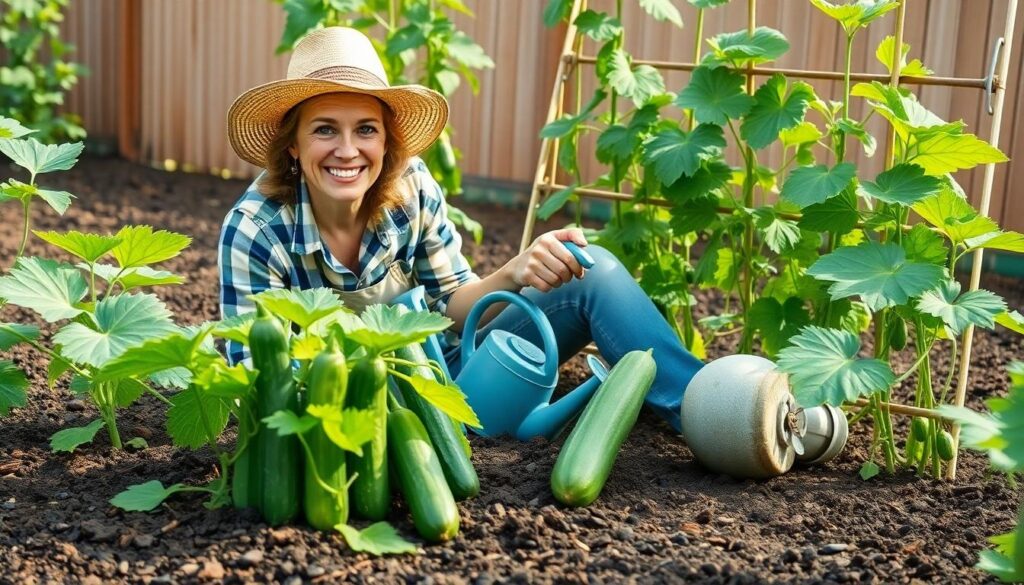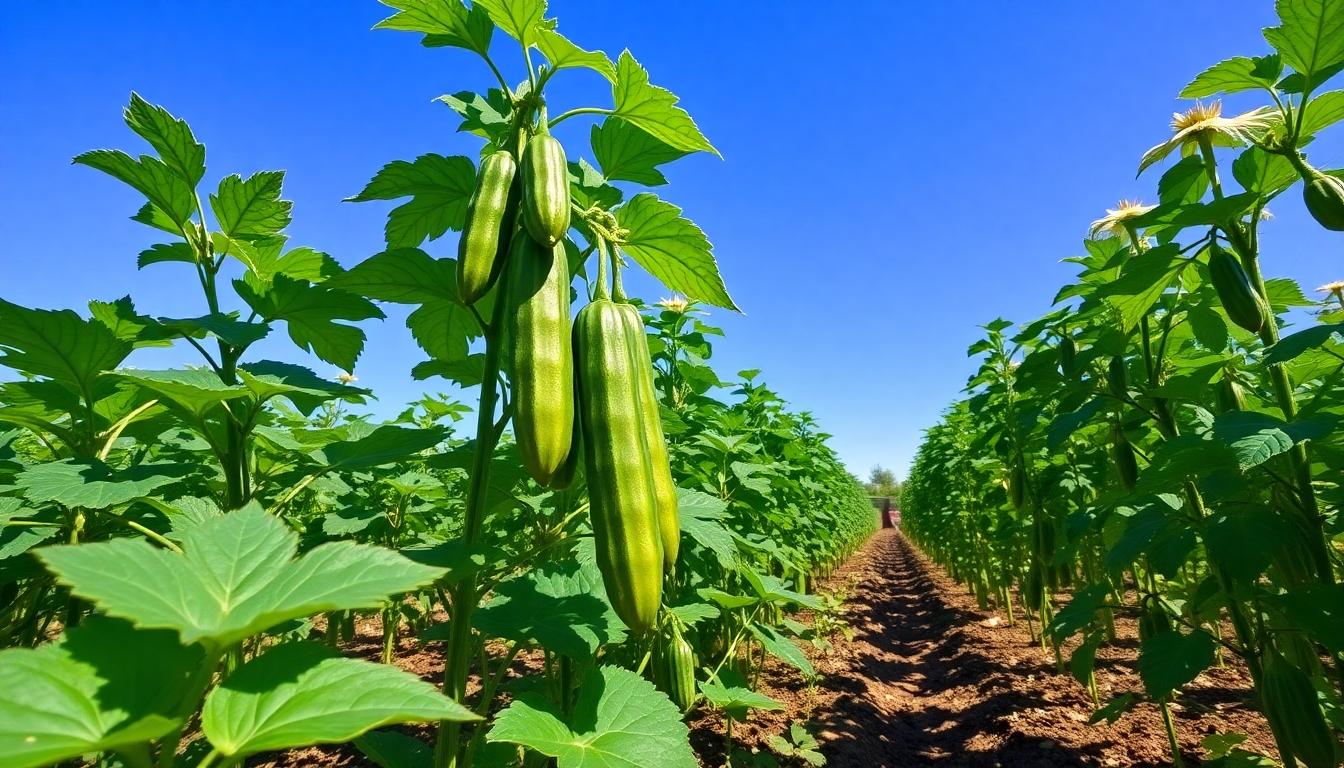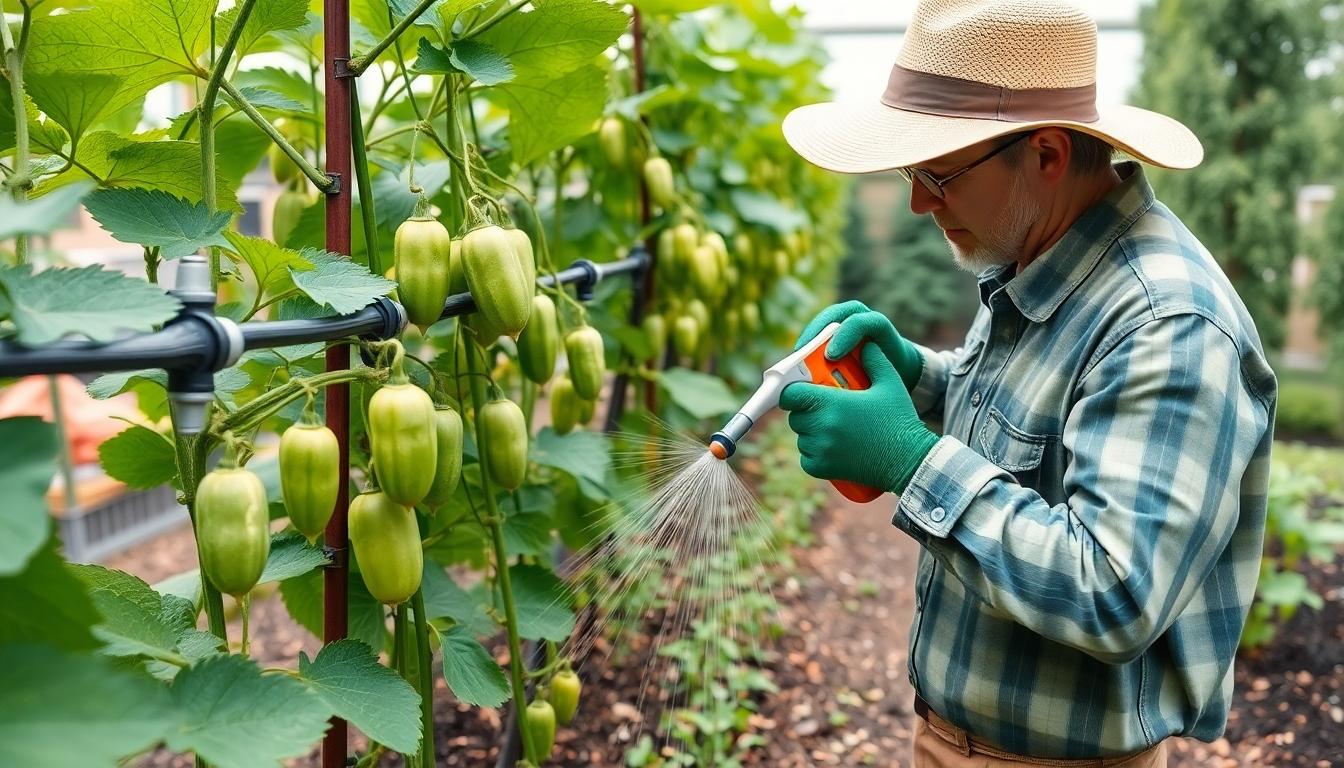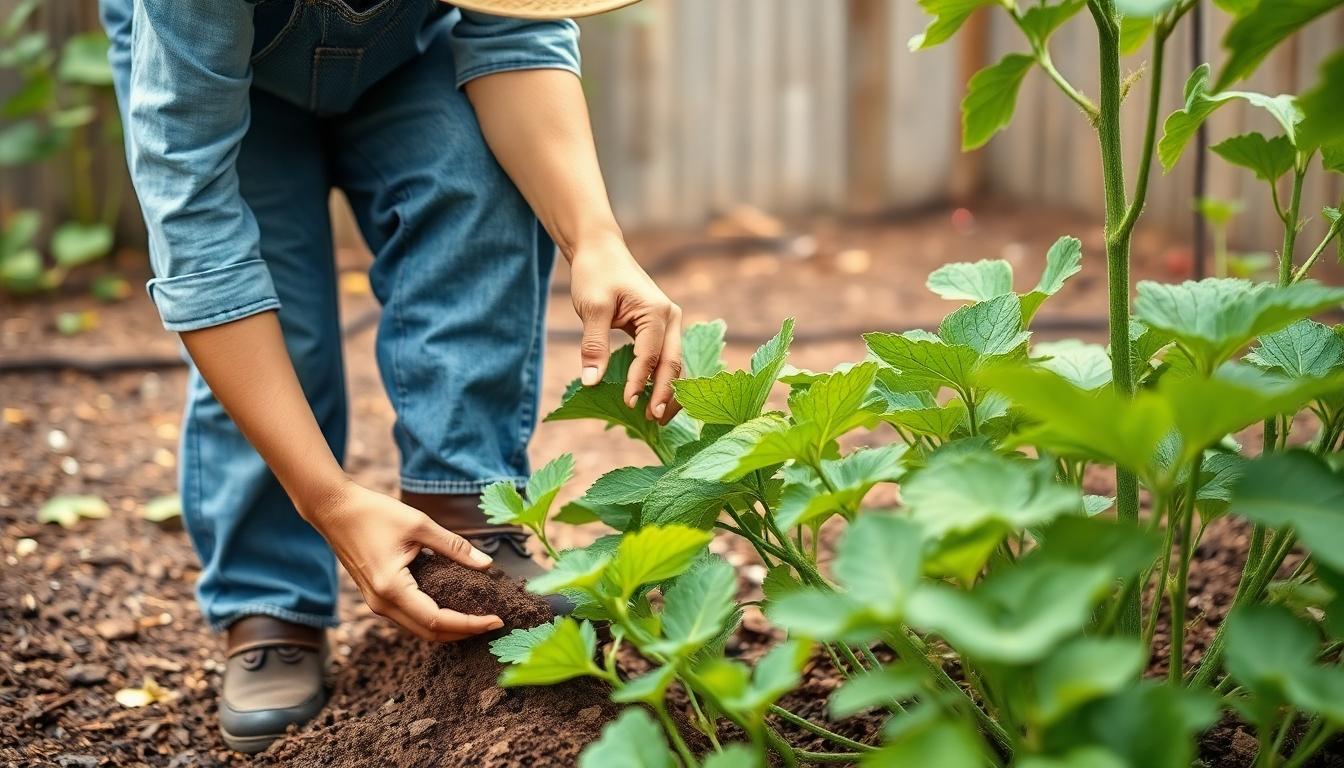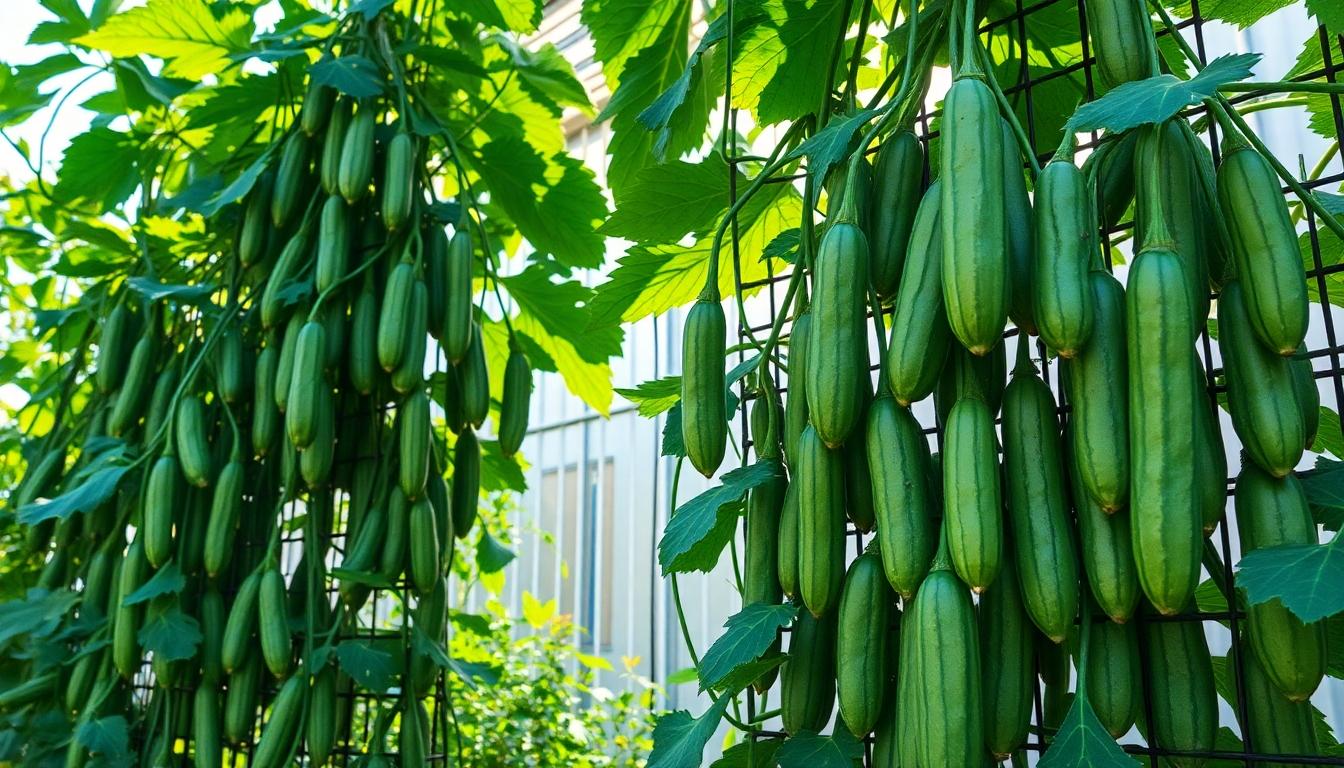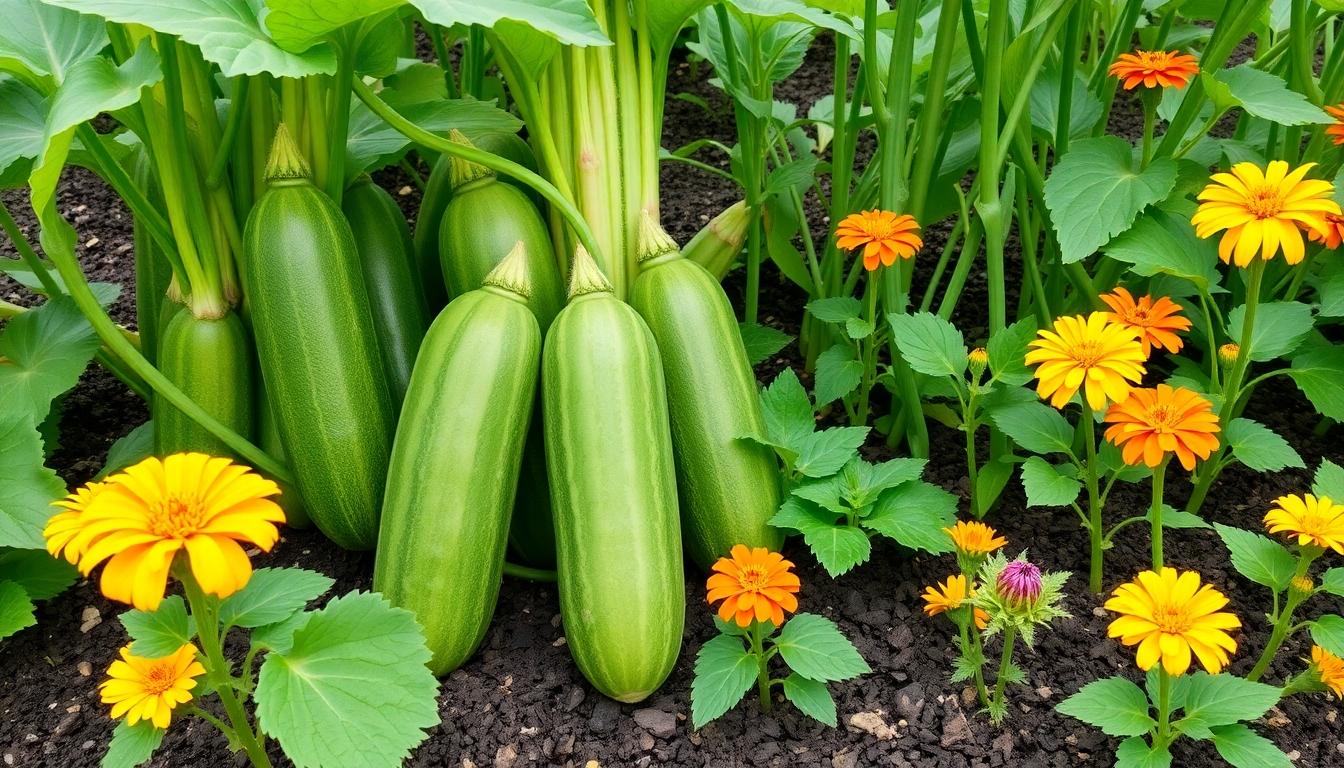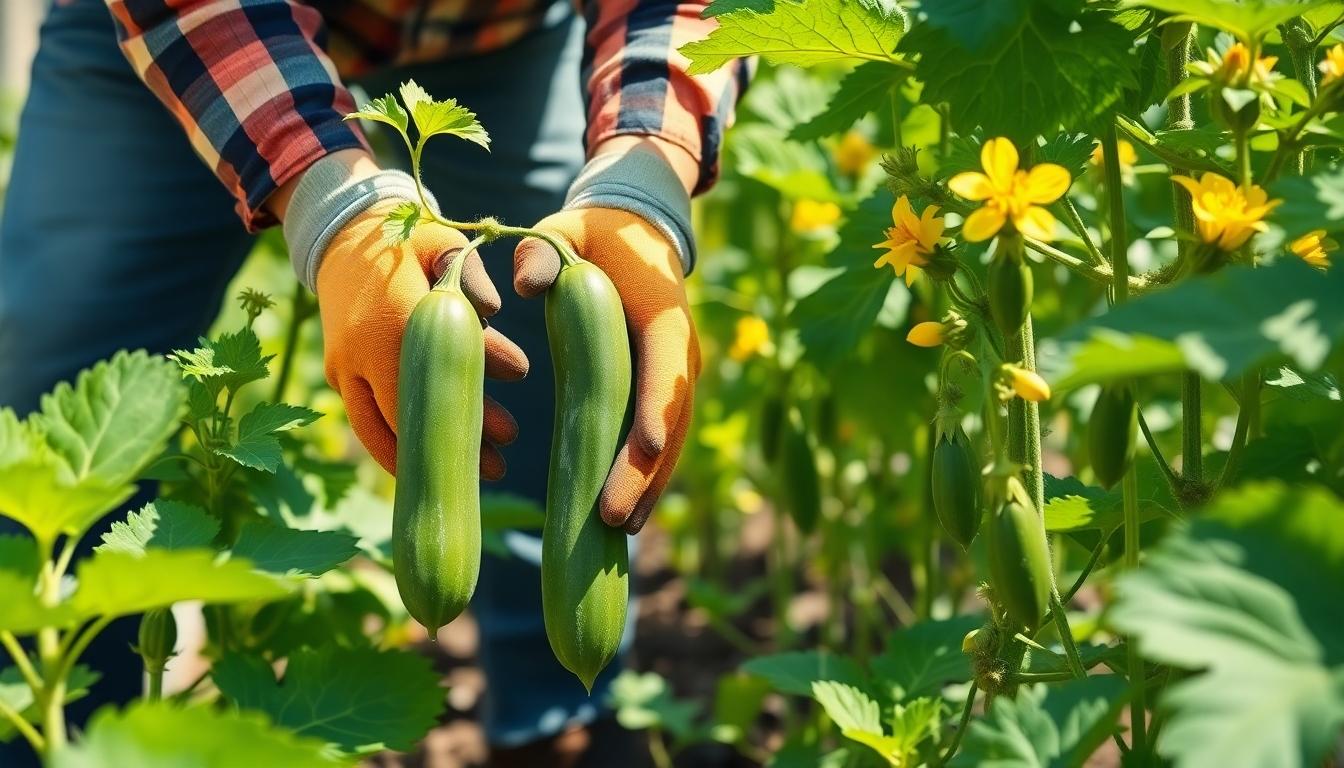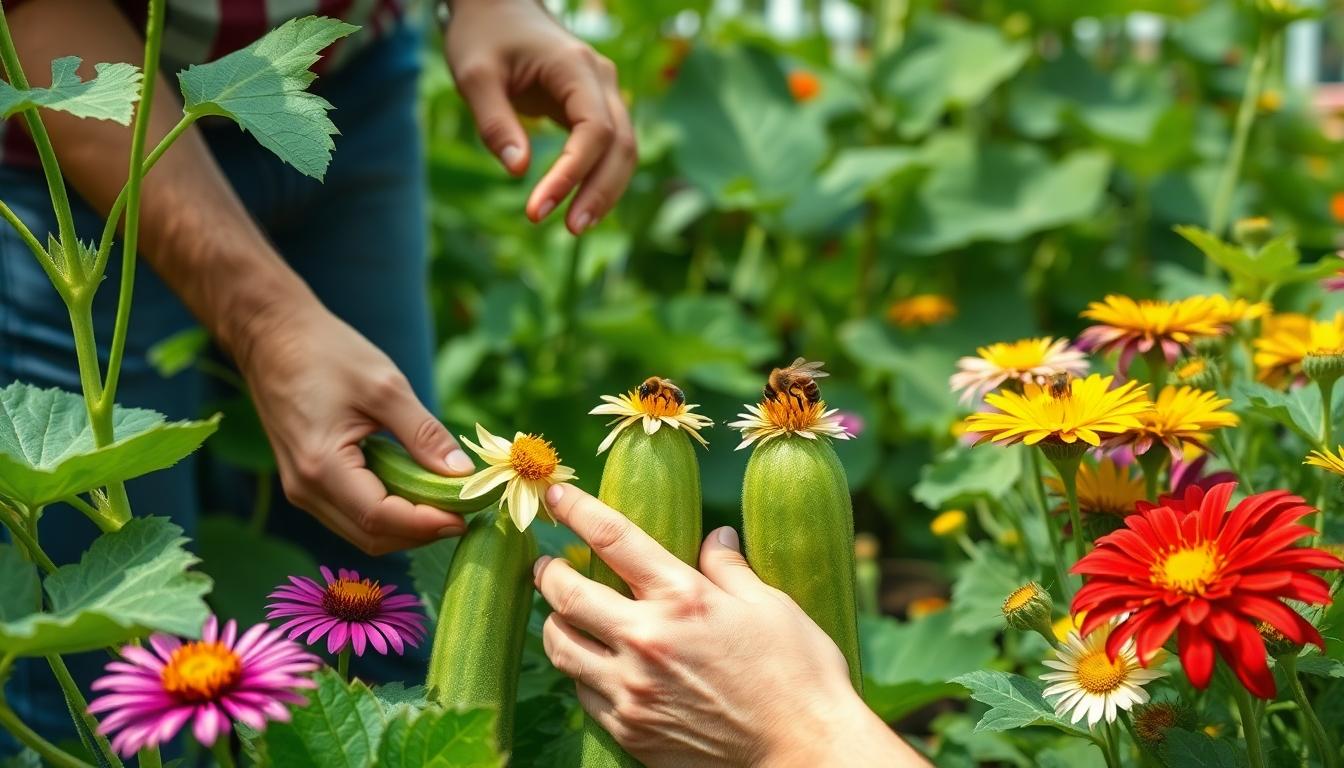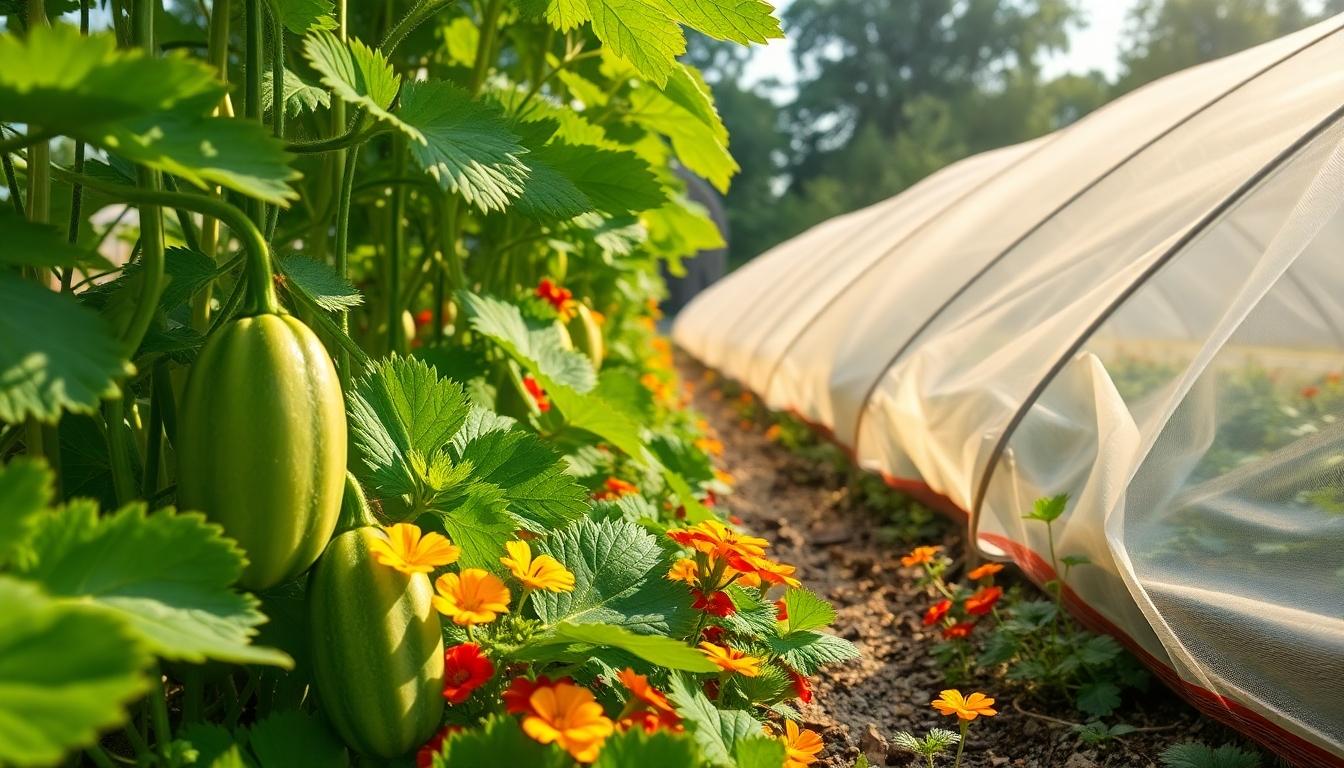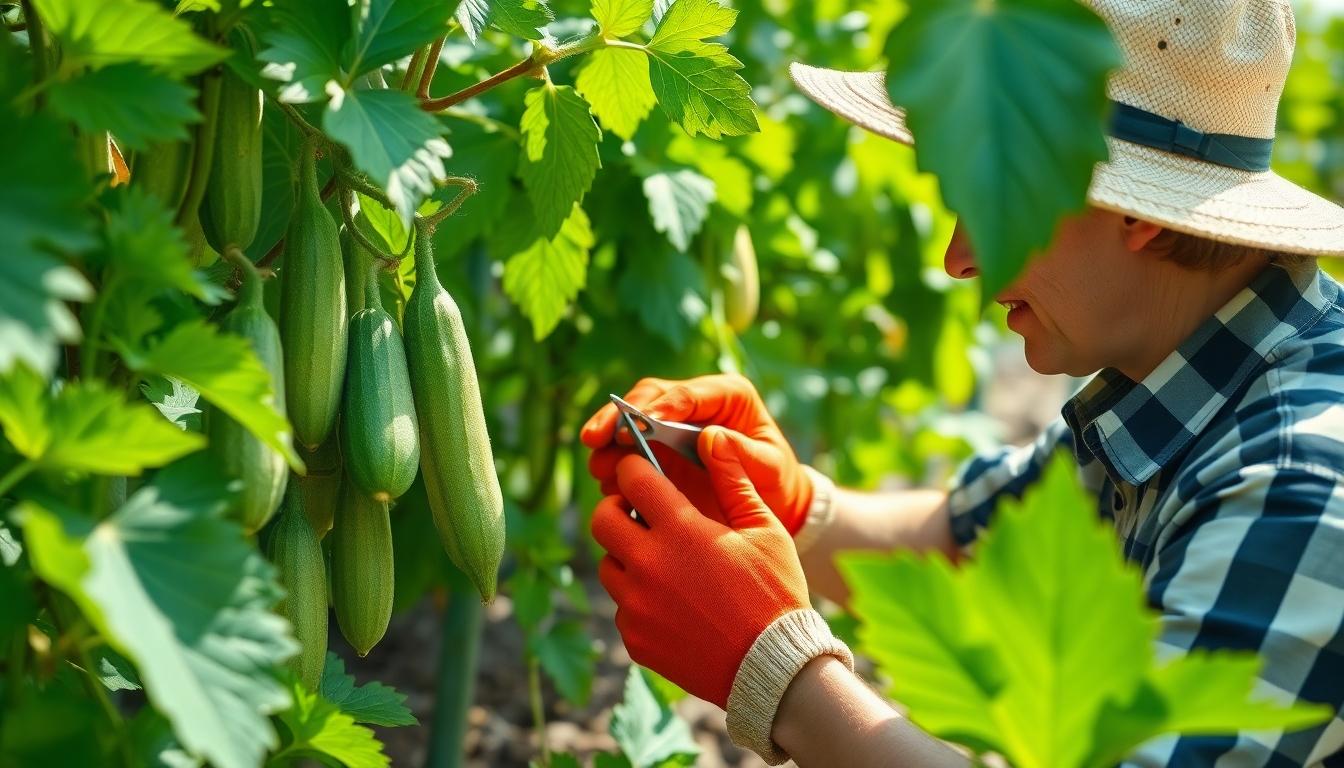Growing plump, crisp cucumbers is a dream for many gardeners, but achieving abundant harvests can sometimes feel like chasing rainbows. We’ve spent years perfecting techniques that transform struggling cucumber plants into powerhouse producers, and we’re excited to share these game-changing strategies with you.
Whether you’re dealing with lackluster yields or simply want to maximize your garden space, the right growing practices can double or even triple your cucumber production. From soil preparation secrets to strategic watering techniques, we’ll reveal how subtle adjustments to your gardening routine can lead to dramatic improvements in your harvest.
10 Essential Soil Preparation Techniques for Cucumber Plants
- Test your soil pH first – Cucumbers thrive in slightly acidic soil with a pH between 6.0 and 7.0. We recommend purchasing an inexpensive soil testing kit to determine your current levels before making any amendments. Adjusting pH with lime (to raise) or sulfur (to lower) at least 2-3 weeks before planting ensures optimal nutrient availability for your cucumber plants.
- Add plenty of organic matter – Incorporating 2-3 inches of compost, well-rotted manure, or leaf mold into your cucumber bed dramatically improves soil structure and fertility. These materials release nutrients slowly, providing a steady food supply throughout the growing season while improving moisture retention capabilities.
- Deep till the planting area – Loosening soil to a depth of 12-15 inches creates an ideal environment for cucumber roots to expand easily. This technique is particularly important in clay-heavy soils that tend to compact, restricting root growth and reducing overall plant vigor.
- Create raised beds for better drainage – Building beds 8-12 inches high substantially improves drainage in areas with heavy soils. Cucumbers absolutely hate “wet feet,” and raised beds prevent water from pooling around roots, which can lead to rot and fungal diseases that devastate yields.
- Incorporate balanced organic fertilizer – Mixing in a complete organic fertilizer (with an NPK ratio around 5-10-10) at a rate of 2-3 pounds per 100 square feet provides essential nutrients. The higher phosphorus and potassium levels particularly support flowering and fruiting, directly impacting your harvest quantity.
- Apply a layer of aged manure – Spreading a 1-inch layer of aged cow or horse manure introduces beneficial microorganisms and adds valuable nitrogen. Fresh manure should never be used as it can burn plants and introduce pathogens—ensure your manure has been composted for at least 6 months.
- Add crushed eggshells for calcium – Distributing crushed eggshells throughout your cucumber bed prevents blossom end rot and strengthens cell walls. This simple kitchen waste product slowly releases calcium into the soil, supporting healthy fruit development throughout the season.
- Mix in some sand for heavy soils – Blending coarse sand at a ratio of 1 part sand to 3 parts soil significantly improves drainage in heavy clay soils. The sand creates air pockets that allow water to move more freely and prevent compaction that restricts root growth.
- Pre-warm your soil with plastic mulch – Covering prepared beds with black plastic 2-3 weeks before planting raises soil temperature by 5-10°F. Cucumbers are heat-loving plants that germinate faster and grow more vigorously in warm soil, giving your plants a substantial head start.
- Inoculate with beneficial microorganisms – Applying mycorrhizal fungi products directly to your prepared soil establishes beneficial relationships with cucumber roots. These specialized fungi extend the effective root system by up to 700%, dramatically improving nutrient uptake and water absorption capabilities.
How to Choose the Right Cucumber Varieties for Maximum Yield
Selecting appropriate cucumber varieties is crucial for maximizing your garden’s productivity. The right cultivars can withstand challenging conditions and produce abundantly throughout the growing season.
Heat-Tolerant Varieties for Summer Growing
Armenian cucumbers stand out as exceptional performers during intense summer heat, continuing to produce even when temperatures soar. These remarkable heat-lovers maintain consistent flowering and fruiting cycles when other varieties would typically shut down production. Tasty Green, a popular hybrid variety, offers impressive 12-inch burpless fruits while demonstrating excellent tolerance to hot, humid growing conditions. Gardeners in particularly warm regions should consider Suyo Long, an heirloom variety that naturally resists developing bitter flavors during summer heat waves. For those interested in pickling cucumbers, Wautoma delivers reliable performance even in temperatures exceeding 100°F, making it ideal for gardens in hot climates. Heat adaptability is essential for maintaining continuous harvests, as these specialized varieties continue flowering and setting fruit even when thermometers climb above 90°F.
Disease-Resistant Cucumbers for Troublesome Areas
Wautoma cucumbers provide excellent natural resistance to common cucumber pathogens, significantly reducing your risk of crop loss. This variety’s built-in disease resilience makes it perfect for gardens with recurring pest or disease issues. Hybrid varieties typically offer enhanced disease resistance compared to open-pollinated types due to their carefully controlled breeding programs. Selecting disease-resistant cultivars becomes especially important in humid climates where fungal issues frequently challenge cucumber plants. Plant spacing plays a critical role in disease prevention, with direct-sown heat-tolerant varieties benefiting from 6-inch spacing to promote optimal air circulation between plants. Vining cucumber types generally demonstrate better disease resistance than bush varieties while also providing extended harvest windows through successive flowering cycles.
7 Watering Strategies That Dramatically Boost Cucumber Yield
1. Consistent Moisture Maintenance
Maintaining consistent soil moisture is essential for cucumber plants to thrive and produce abundantly. Deep watering twice weekly provides the steady moisture cucumbers need to develop properly. Container-grown cucumbers require more frequent attention, often needing daily watering during hot summer months to prevent stress and yield reduction. Applying straw mulch around your cucumber plants serves a dual purpose by helping retain valuable soil moisture while also regulating temperature fluctuations that could otherwise impact growth.
2. Drip Irrigation Benefits for Cucumber Plants
Drip irrigation systems deliver water precisely where cucumber plants need it most—directly to their root zones. This targeted approach minimizes water waste while keeping foliage dry, significantly reducing the risk of destructive fungal diseases that can devastate your crop. Plants respond remarkably well to this consistent moisture delivery method, developing stronger root systems that support increased fruit production. Many commercial growers rely on drip irrigation specifically because it maintains optimal soil moisture levels that directly correlate with higher cucumber yields.
3. Morning Watering Technique
Watering cucumber plants in the early morning gives them ample time to absorb moisture before the heat of the day. Morning irrigation allows foliage to dry completely before evening, minimizing disease pressure that thrives in cool, damp overnight conditions. Plants use morning water more efficiently, directing resources toward fruit development rather than recovery from afternoon heat stress. This simple timing adjustment often translates to noticeable improvements in both plant health and overall harvest quantity.
4. Moisture Monitoring Methods
Testing soil moisture before watering prevents both under and overwatering situations that compromise cucumber production. Insert your finger approximately 1-2 inches into the soil near your cucumber plants—if it feels dry at that depth, watering is needed. Moisture meters provide more precise readings for gardeners seeking optimal growing conditions. Establishing a consistent monitoring routine helps you recognize patterns in your garden’s water needs based on weather conditions and plant growth stages.
5. Optimal Watering Schedule Throughout the Growing Season
Cucumber plants require different watering approaches as they progress through their growth cycle. During germination and early seedling stages, maintain consistently moist soil to support establishment and root development. Once plants enter the flowering stage, continue regular watering but avoid creating overly wet conditions that might discourage pollination. Throughout the fruiting period, ensure steady moisture to support cucumber development without fluctuations that can cause misshapen fruits or bitter taste. Adjust your watering schedule during each phase to maximize production potential.
6. Water Quality Considerations
Cucumbers prefer slightly acidic to neutral water for optimal nutrient uptake. Allowing chlorinated tap water to sit for 24 hours before using it on plants helps dissipate chemicals that might inhibit growth. Collecting rainwater provides an excellent irrigation source rich in nitrogen that cucumber plants readily use. Water temperature matters too—using room temperature water rather than cold prevents shock to plant roots and encourages continuous growth.
7. Vertical Growing Water Management
Trellised cucumber plants require slightly different watering strategies than those grown on the ground. Vertical growing systems improve air circulation around plants, often reducing water needs while simultaneously increasing yield potential. Focus water delivery at the base of vertically grown cucumbers to ensure moisture reaches the root zone rather than evaporating from exposed surfaces. The combination of proper vertical support and targeted watering creates ideal growing conditions that can dramatically boost your cucumber harvest.
The Perfect Fertilization Schedule to Support Heavy Fruiting
Proper fertilization is the cornerstone of maximizing cucumber yields. Implementing a strategic nutrient schedule ensures your plants have everything they need during their critical growth and fruiting stages.
Organic Fertilizers for Healthier Cucumber Plants
Organic fertilizers create the foundation for truly thriving cucumber plants by improving overall soil health. Compost serves as an excellent base fertilizer, providing a rich array of nutrients while introducing beneficial microorganisms that enhance root development. Properly aged manure delivers slow-release nutrients that feed plants gradually throughout the growing season without the risk of nitrogen burn. Green manure, created by incorporating nitrogen-fixing crops like legumes directly into your garden soil, naturally enriches the growing medium with essential nutrients. These organic options not only feed your cucumber plants but also improve soil structure, water retention, and long-term garden vitality.
Foliar Feeding Techniques for Faster Results
Foliar feeding bypasses the soil entirely, delivering nutrients directly where plants can absorb them quickly through their leaves. Use balanced formulas containing appropriate ratios of nitrogen, phosphorus, and potassium to support different growth stages—higher nitrogen early on and more phosphorus during flowering and fruiting. Timing matters significantly; always apply foliar feeds during cooler parts of the day (early morning or evening) to prevent leaf burn and maximize absorption. Maintain a consistent frequency by applying foliar feeds every two weeks specifically during the fruiting stage when cucumbers need extra nutritional support. This direct-to-leaf feeding method provides almost immediate results, helping cucumber plants overcome temporary nutrient deficiencies and supporting continuous production throughout the growing season.
Trellising Methods That Increase Production and Save Space
Dramatic Yield Improvements
Trellising your cucumber plants can boost production by 2-3 times compared to ground-grown methods. This remarkable increase occurs because vertically grown cucumbers receive better sunlight exposure throughout the plant structure. Improved air circulation around trellised plants significantly reduces disease pressure that typically affects ground-grown cucumbers. Pest management becomes much easier when plants grow vertically, as you can spot and address issues before they become severe. Enhanced photosynthesis resulting from less leaf overcrowding directly translates to more cucumbers per plant.
Space-Saving Vertical Systems
Vertical growing transforms even the smallest garden spaces into productive cucumber patches. Training vines upward instead of allowing them to sprawl conserves valuable ground space, making this technique perfect for urban gardens. High-density planting becomes possible with trellising, allowing more plants per square foot than traditional methods. Commercial growers often carry out high-tunnel systems with netting or single-string trellises to maximize production in limited areas. These vertical methods prevent ground-contact defects like yellowing and rot that diminish marketability.
Most Effective Trellising Techniques
Netting and wire systems provide excellent support for slicing cucumber varieties with minimal maintenance required. Simply secure plastic Hortonova netting between sturdy posts and train vines to climb as they grow. Single-string trellising works particularly well for Beit Alpha cucumber types, though it requires more hands-on management. This method involves pruning plants to a single main stem and removing flowers from the first four nodes to prioritize strong initial growth. Disease prevention represents one of trellising’s greatest benefits, as elevated foliage dries faster after rain or irrigation, dramatically reducing fungal pathogen spread.
Harvesting Benefits
Trellised cucumbers grow straighter and more uniform than ground-grown fruits, making them more visually appealing and marketable. Harvesting becomes significantly easier when fruits hang at eye level rather than hiding under foliage on the ground. Vertical growing eliminates the yellow ground spots that develop when cucumbers rest on soil surfaces. We’ve found that easier fruit visibility prevents missing cucumbers during harvest, which would otherwise overripen and signal the plant to reduce production.
Implementation Guidelines
Select a full-sun location providing 6-8 hours of direct sunlight daily for optimal trellising results. Enrich the soil with compost and slow-release fertilizer before planting to support the heavy production potential of trellised plants. Train young vines by gently wrapping them around trellis strings or using specialized clips to guide growth in the desired direction. For single-string systems, remove lateral branches to direct energy toward fruit-bearing stems rather than excessive vegetation. Trellised plants may require more frequent watering due to increased exposure to drying winds.
Companion Planting: The Best and Worst Neighbors for Cucumbers
Strategic companion planting can dramatically boost your cucumber yields by creating beneficial growing relationships in your garden. Thoughtful plant pairings help cucumbers thrive by improving nutrition, deterring pests, and creating favorable microclimates. Understanding which plants make good neighbors—and which don’t—is essential for maximizing your harvest.
Best Companions for Cucumbers
Corn serves as an excellent cucumber companion, providing natural shade that protects tender cucumber plants during intense summer heat. Beans and peas offer important benefits by fixing nitrogen in the soil, delivering nutrients cucumbers need for vigorous growth and abundant fruiting. Radishes planted alongside cucumbers can draw away harmful pests while taking up minimal space in your garden beds. Marigolds deserve special mention as they release compounds that deter many cucumber pests, creating a natural protective barrier around your plants. These companion plants work together to create an network that supports healthy cucumber development.
Plants to Avoid Near Cucumbers
Potatoes should never be planted near cucumbers as they compete aggressively for the same nutrients, significantly reducing cucumber yields. Aromatic herbs like sage can actually inhibit cucumber growth even though their benefits elsewhere in the garden. Their strong essential oils may interfere with the cucumber’s natural development processes. These incompatible neighbors can undermine all your other efforts to boost cucumber production, so maintaining adequate separation is crucial for garden success.
By thoughtfully implementing companion planting strategies, we can create garden environments where cucumbers receive natural protection and nutritional support. The right plant neighbors enhance growing conditions without requiring additional inputs, making companion planting both an ecological and economical approach to increasing cucumber harvests.
Pruning Techniques to Redirect Energy to Fruit Production
Remove First Flowers for Stronger Plants
Pinching off the first flowers on your cucumber plants redirects energy toward vegetative growth instead of premature fruiting. This strategic removal encourages the plant to develop a stronger root system and more foliage before focusing on fruit production. Plants that have established themselves fully before fruiting typically produce higher yields throughout the growing season. For best results, remove the first 2-3 flower sets that appear on young cucumber plants to give them time to mature properly.
Prune Lower Leaves to Improve Air Circulation
Removing the lower leaves of cucumber plants significantly reduces fungal disease pressure while improving overall plant health. These lower leaves often touch the ground where pathogens live, creating ideal conditions for diseases that can stunt growth and reduce yields. Regular pruning of yellowing, diseased, or low-hanging foliage increases air movement around plants and reduces humidity at the base. Improved air circulation keeps plants drier and less susceptible to yield-reducing fungal infections that commonly affect cucumbers.
Train Vines Properly for Maximum Production
Directing cucumber vines upward on trellises or supports maximizes their fruiting potential while making harvesting much easier. Trained vines receive better sunlight exposure on all sides, which promotes more female flower development and subsequent fruit formation. Vertical growing prevents fruits from developing ground-contact blemishes and allows cucumber plants to put energy into fruit rather than searching for climbing supports. Regular vine training throughout the growing season ensures plants maintain their upward growth pattern for optimal yield.
Thin Out Overcrowded Areas
Removing excess lateral shoots and suckers prevents cucumber plants from becoming too dense and unproductive. Overcrowded foliage limits light penetration to inner parts of the plant, reducing photosynthesis efficiency and flower production. Selective thinning of secondary growth concentrates the plant’s resources toward developing existing fruits rather than supporting excessive vegetative growth. This technique works particularly well when growing cucumbers vertically, as it maintains an open structure that facilitates better pollination.
Balance Leaf-to-Fruit Ratio
Maintaining the proper balance between leaves and developing fruits ensures cucumbers grow to their full potential. Each developing cucumber requires approximately 3-5 healthy leaves to provide enough energy for optimal growth. Removing excess fruits when plants become overloaded prevents the plant from exhausting itself and producing many small, underdeveloped cucumbers. By selectively thinning fruits and maintaining adequate leaf area, plants can channel their energy more efficiently into developing fewer but larger, higher-quality cucumbers.
Effective Pollination Strategies for More Consistent Harvests
Pollination plays a critical role in cucumber production, directly influencing your harvest quantity and quality. Many gardeners overlook this crucial aspect, but proper pollination can make the difference between a bountiful harvest and disappointing yields. We’ve gathered the most effective strategies to ensure your cucumber plants produce consistently throughout the growing season.
Understand Cucumber Flower Types
Cucumber plants produce both male and female flowers, with only the female flowers developing into fruit after successful pollination. Selecting varieties that naturally produce more female flowers can significantly increase your potential yield. These specialized cultivars are genetically designed to focus more energy on fruit production rather than flower development, resulting in heavier harvests with less effort on your part.
Manual Pollination Techniques
Hand pollination proves remarkably effective for cucumbers, especially in greenhouse environments or areas with limited natural pollinators. This technique ensures nearly every female flower develops into a cucumber, maximizing your potential harvest. The process is straightforward:
- Identify male flowers (those without a small cucumber shape at the base)
- Remove a male flower and peel back its petals to expose the pollen-covered anther
- Gently touch or brush the anther against the stigma of female flowers (those with tiny cucumbers behind them)
- Repeat with several female flowers using the same male flower
This method is particularly valuable during early morning hours when pollen is most viable and during periods of high humidity when natural pollination might be less effective.
Create Pollinator-Friendly Gardens
Attracting natural pollinators can dramatically improve cucumber yields without requiring daily intervention. Planting flowers like zinnias, sweet alyssum, and nasturtiums near your cucumber patch creates a pollinator paradise that benefits your entire garden. These companion plants not only attract bees and other beneficial insects but also serve as natural pest deterrents, creating a healthier growing environment for your cucumbers.
Timing Considerations for Optimal Pollination
The time of day significantly impacts pollination success rates. Cucumber flowers typically open early in the morning and remain receptive for only a limited period. Natural bee activity peaks during warm, sunny mornings, making this the ideal time for pollination to occur. Water your plants the evening before expected flower opening to ensure they’re not water-stressed during this critical period.
Environmental Controls for Better Pollination
Maintaining appropriate growing conditions encourages better flowering and pollination. Cucumbers thrive with approximately 8 hours of direct sunlight daily and perform best in warm conditions. Cold temperatures can inhibit flower production and pollen viability, directly impacting your harvest potential. Using row covers during cool periods can create a microclimate that supports continuous flowering and effective pollination.
By implementing these pollination strategies, we’ve seen gardeners increase their cucumber yields by 30-50% without changing other aspects of their growing practices. The consistent fruiting that results from proper pollination techniques not only increases total harvest but also extends your picking season, providing fresh cucumbers for a longer period throughout the summer.
Pest Management Approaches That Protect Your Cucumber Yield
Carry out Trap Crops as Natural Pest Diversion
Trap crops work wonders for protecting your cucumber plants by drawing pests away from your main crop. Nasturtiums prove particularly effective at attracting aphids and cucumber beetles, keeping these destructive insects occupied and away from your valuable cucumbers. Planting these sacrificial crops around the perimeter of your cucumber patch creates a protective barrier that intercepts pests before they reach your main plants. Many commercial growers have adopted this technique as part of their integrated pest management strategy, reporting important reductions in pest pressure without chemical interventions.
Deploy Row Covers for Early Season Protection
Row covers offer excellent defense against cucumber beetles during the vulnerable seedling stage. These lightweight fabric barriers allow sunlight, water, and air to reach your plants while creating a physical barrier against flying insects. Research shows that installing row covers immediately after planting and securing the edges with soil or pins prevents early infestations that can stunt growth or transmit diseases. We recommend removing covers once plants begin flowering to allow for pollinator access, which is crucial for fruit development.
Introduce Beneficial Insects to Control Harmful Pests
Beneficial insects serve as a natural army against cucumber pests, providing continuous protection without chemicals. Releasing Trichogramma wasps helps control moth eggs that would otherwise develop into destructive caterpillars. Ladybugs efficiently manage aphid populations, with a single adult capable of consuming up to 50 aphids daily. Creating habitat features like small water sources and flowering companion plants encourages these beneficial insects to establish permanent populations in your garden, offering long-term pest management benefits.
Apply Organic Sprays for Targeted Pest Control
Organic sprays provide effective control when pest populations threaten to overwhelm your cucumber plants. Neem oil disrupts the life cycle of multiple pests including aphids, mites, and beetle larvae while being relatively gentle on beneficial insects when applied correctly. Insecticidal soaps work through direct contact with soft-bodied insects, breaking down their protective outer layers. Weekly applications during active infestations deliver optimal results, though spraying should occur in early morning or evening to minimize impact on pollinators and prevent leaf burn.
Prevent Disease Through Cultural Practices
Disease prevention forms a critical component of cucumber yield protection. Annual crop rotation prevents pathogen buildup in the soil, with research supporting a minimum three-year rotation cycle for cucurbits. Watering at soil level rather than overhead significantly reduces powdery mildew incidence, which can devastate cucumber plants when left unchecked. Prompt removal and disposal of infected plant debris eliminates disease reservoirs that could affect current or future crops. Vertical growing systems further enhance disease prevention by improving air circulation around plants, reducing humidity levels that favor fungal development.
Optimize Pollination for Maximum Fruit Set
Pollination protection ensures your pest management efforts translate into actual yield increases. Timing pesticide applications (even organic ones) to avoid flowering periods safeguards bee activity, which is essential for proper fruit development. Hand-pollination using a small brush to transfer pollen from male to female flowers can supplement natural pollination during periods of low bee activity or unfavorable weather conditions. This technique becomes particularly valuable in greenhouse settings or when row covers must remain in place during flowering due to high pest pressure.
Harvesting Tips to Stimulate Continuous Production
Pick Frequently and Consistently
Regular harvesting is the key to maximizing your cucumber yields. We’ve found that harvesting every 1-2 days during peak season encourages plants to produce more fruit. Research shows that cucumbers left too long on the vine signal the plant to slow down production. By removing mature cucumbers promptly, you’re essentially telling the plant to create more fruits. For slicing varieties, several harvests per week are necessary to maintain continuous production throughout the growing season.
Harvest at the Right Size
Timing your cucumber harvest correctly dramatically affects both yield and quality. We recommend picking slicing cucumbers when they reach 6-8 inches long but before they turn yellow or puffy. Pickling cucumbers should be harvested when they’re 2-4 inches long for optimal crispness. Remember that cucumbers grow remarkably fast – a cucumber can double in size overnight during hot weather! Harvesting when fruits are mature but still tender stimulates continuous fruiting cycles.
Use Proper Harvesting Techniques
How you harvest matters as much as when you harvest. We suggest using sharp scissors or pruning shears rather than pulling fruits, which can damage vines and reduce future yield. Cut the cucumber stem about ¼ inch above the fruit to prevent stem rot issues. Gentle handling during harvest prevents bruising and microbial entry points that could affect plant health and productivity.
Morning Harvest Timing
Early morning harvesting provides multiple benefits for cucumber production. We’ve discovered that picking cucumbers in the morning when temperatures are cooler results in crisper fruits with better shelf life. Morning harvests also give plants the entire day to recover and redirect energy toward developing new fruits. This simple timing adjustment supports the plant’s natural growth cycle and contributes to overall increased yields.
Don’t Miss the Hidden Cucumbers
Thorough harvesting practices ensure maximum yield potential. We always check under large leaves and in dense foliage where cucumbers often hide. Missing even a few cucumbers can significantly impact production – these overlooked fruits will quickly become oversized, signaling the plant to slow down new fruit development. Complete harvesting is particularly important with trellised cucumbers where fruits might be concealed behind vertical foliage.
Harvest Before Fully Mature Seeds Develop
Preventing seed maturation helps maintain continuous production cycles. We recommend harvesting cucumbers before seeds fully mature inside the fruits. Once seeds develop completely, the plant redirects important energy toward seed production rather than growing new fruits. This biological shift can reduce overall yield by as much as 25%. Regular harvesting interrupts this seed development process, keeping plants in productive fruiting mode longer.
Conclusion: Implementing a Complete System to Boost Cucumber Yield
Boosting cucumber yield isn’t about one magical technique but rather implementing a comprehensive approach. By combining proper soil preparation, strategic watering, appropriate fertilization and smart trellising we’ve shown how to create an optimal growing environment.
The integration of companion planting, pruning techniques and effective pollination strategies further enhances productivity. Coupled with vigilant pest management and timely harvesting these methods create a synergistic system that maximizes output.
We’ve provided actionable strategies that work together to transform your cucumber garden. Implementing even a few of these techniques will show noticeable improvements but the greatest yields come from adopting the complete system. With these approaches you’ll be harvesting crisp delicious cucumbers all season long while enjoying significantly higher production than ever before.
Frequently Asked Questions
What is the ideal soil pH for growing cucumbers?
Cucumbers prefer slightly acidic to neutral soil with a pH between 6.0 and 7.0. Before planting, test your soil and adjust as needed. Adding organic matter like compost helps stabilize pH while improving soil structure. For acidic soils, add garden lime to raise pH; for alkaline soils, incorporate sulfur to lower it.
How often should I water cucumber plants?
Water cucumber plants deeply twice weekly in normal conditions, providing 1-2 inches of water per week. During hot weather, container-grown cucumbers may need daily watering. Use drip irrigation when possible to deliver water directly to roots while keeping foliage dry. Water early in the morning to reduce evaporation and disease pressure.
What are the best companion plants for cucumbers?
The best companion plants for cucumbers include corn (provides natural trellising), beans and peas (fix nitrogen in soil), radishes (deter cucumber beetles), sunflowers (attract pollinators), and marigolds (repel pests). Avoid planting cucumbers near potatoes, which compete for nutrients, and aromatic herbs like sage that can inhibit cucumber growth.
How do I trellis cucumber plants effectively?
Install trellises at planting time, using netting, cattle panels, or A-frames that reach 5-6 feet tall. Position trellises for maximum sun exposure, usually north-south alignment. Gently train young vines upward using plant clips or soft ties. Ensure the trellis is sturdy enough to support fully-laden plants. Trellising can increase yields 2-3 times compared to ground cultivation.
When should I harvest cucumbers?
Harvest cucumbers every 1-2 days during peak season when they reach appropriate size for their variety (typically 6-8 inches for slicing types, 3-5 inches for pickling). Pick in the early morning when fruits are crispest. Use sharp scissors or pruners to cut, not pull, cucumbers from vines. Regular harvesting stimulates plants to produce more fruit.
How can I prevent cucumber diseases?
Prevent cucumber diseases by practicing crop rotation (waiting 3 years before replanting cucumbers in the same spot), using drip irrigation to keep foliage dry, improving air circulation through proper spacing and trellising, applying organic mulch to prevent soil splashing, and selecting disease-resistant varieties. Remove infected plants immediately to prevent spread.
What’s the best fertilization schedule for cucumbers?
Start with compost-enriched soil before planting. Apply balanced organic fertilizer (like 5-5-5) at planting time. Once flowering begins, switch to a lower-nitrogen, higher-phosphorus formula (like 5-10-10) every 3-4 weeks. Consider weekly foliar feeding with diluted fish emulsion during heavy fruiting periods. Avoid excessive nitrogen, which promotes foliage at the expense of fruit.
How do I ensure proper pollination for my cucumber plants?
Plant pollinator-friendly flowers nearby to attract bees and other beneficial insects. If growing parthenocarpic (self-pollinating) varieties, no additional action is needed. For standard varieties, hand-pollinate by transferring pollen from male flowers (thin stems) to female flowers (with tiny cucumber behind the bloom) using a small brush during morning hours when pollen is most viable.
What are the most productive cucumber varieties?
High-yielding varieties include ‘Marketmore 76’ (disease-resistant slicing cucumber), ‘Tasty Green’ (heat-tolerant hybrid), ‘Wautoma’ (reliable pickling cucumber), ‘Lemon’ (compact, prolific heirloom), and ‘Socrates’ (greenhouse/container variety). Choose varieties suited to your climate and growing conditions. Hybrids generally offer better disease resistance and higher yields than open-pollinated types.
How do I manage cucumber beetles naturally?
Control cucumber beetles by installing yellow sticky traps to monitor populations, covering young plants with row covers until flowering, planting trap crops like blue hubbard squash nearby, introducing beneficial insects like soldier bugs, applying diatomaceous earth around plant bases, and using neem oil spray for severe infestations. Remove plant debris at season’s end to eliminate overwintering sites.

